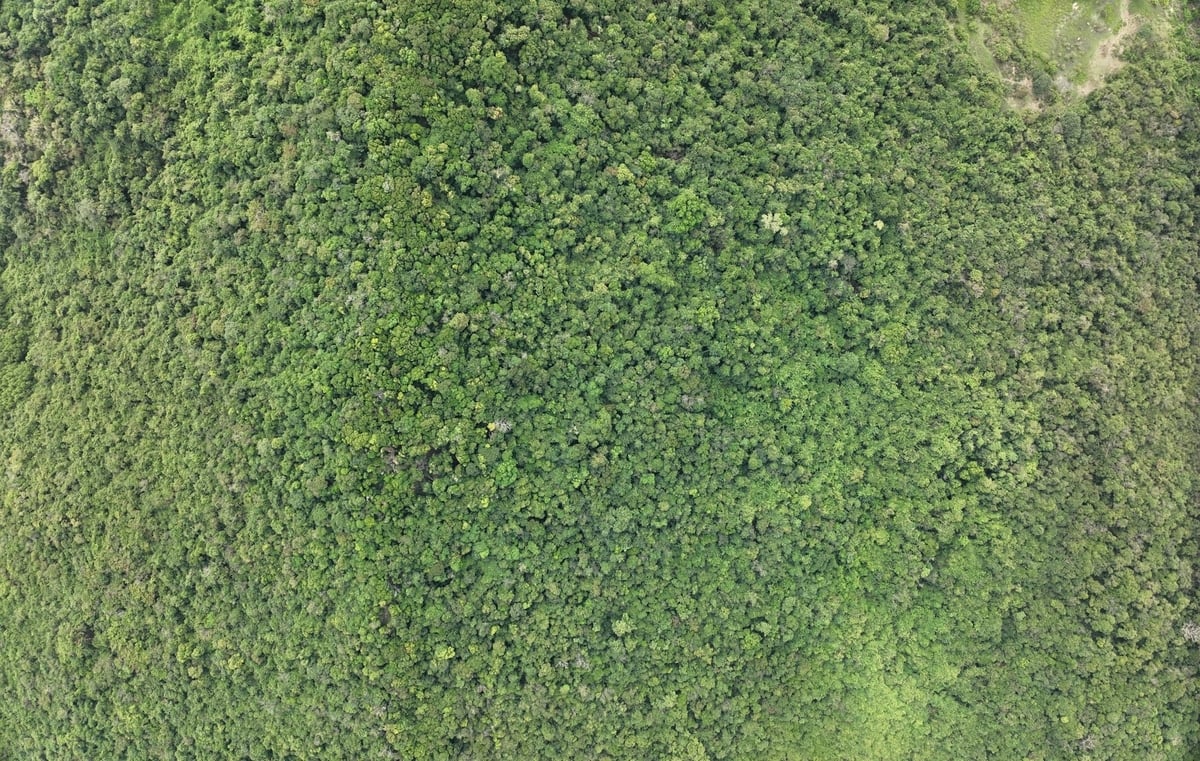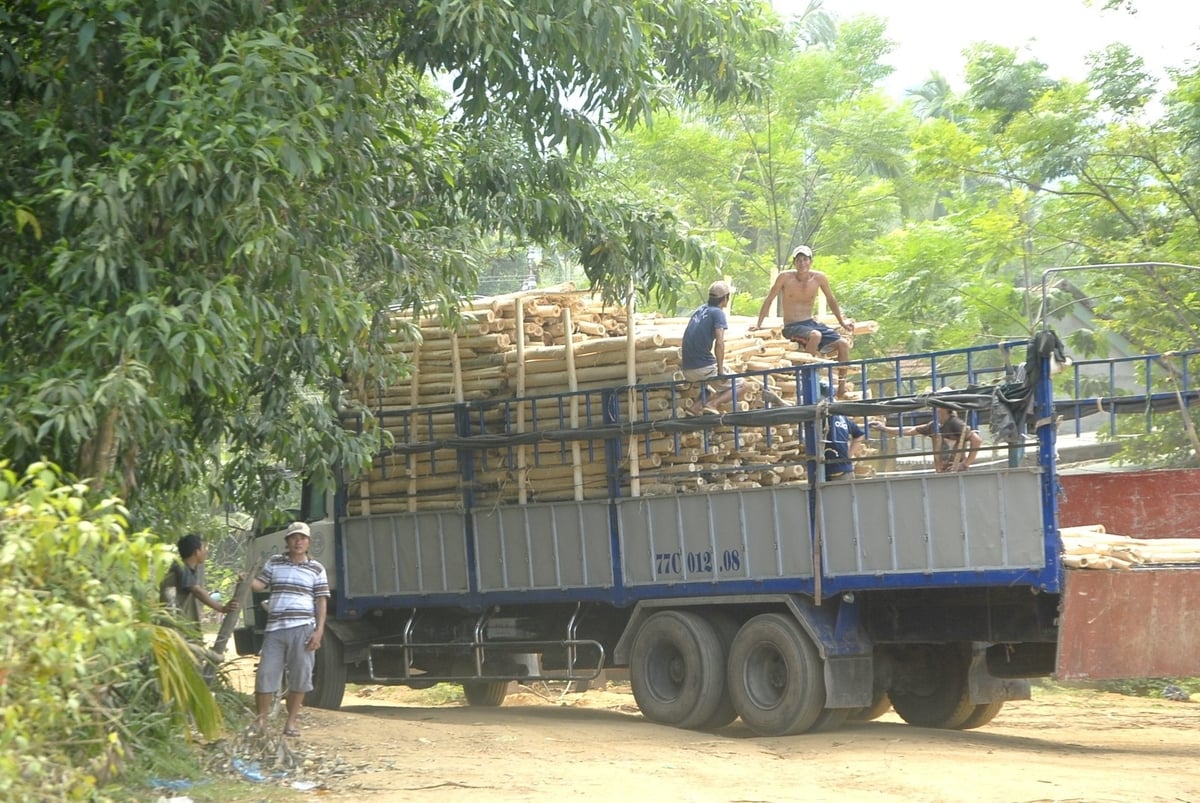January 2, 2026 | 18:21 GMT +7
January 2, 2026 | 18:21 GMT +7
Hotline: 0913.378.918
January 2, 2026 | 18:21 GMT +7
Hotline: 0913.378.918
According to Le Duc Sau, Head of the Gia Lai Forest Protection Sub-Department, by the end of 2023, the total area of planted forests across the former Binh Dinh province (now Gia Lai province) was over 167,600 hectares. Of which, production forests and planted forests outside the three forest categories accounted for more than 139,233 hectares.

Planted forest areas lacking land use certification are updated on digital maps by Gia Lai's authorities and reported to the Ministry of Agriculture and Environment. Photo: Dinh Thung.
Currently, the province has 9,882 hectares of large timber forests. Among these, nearly 21,926 hectares have been certified for sustainable forest management (FSC, VFCS/PEFC). Specifically, Ha Thanh Forestry Co., Ltd. has over 2,780 hectares; Quy Nhon Forest Co., Ltd. has approximately 4,065 hectares; Song Kon Forestry Co., Ltd. has over 1,284 hectares; Phu Tai Bioenergy JSC has more than 3,053 hectares; Tin Nhan Bioenergy JSC has over 992 hectares; and Quy Nhon Plantation Forest Company Of Vietnam Ltd. has 9,750 hectares.
Among the production forests and planted forests outside the three forest categories within the province, approximately 77,574 hectares, accounting for over 46%, have been allocated or leased by the State to organizations, individuals, and households for afforestation purposes.
"The remaining planted forest area, accounting for nearly 54%, has not been allocated or leased by the State for use and thus is not considered legal under current regulations. This forest area is annually monitored by the provincial Forest Protection Sub-Department, with forest dynamics regularly updated on digital maps, approved by the Provincial People's Committee, and reported to the Ministry of Agriculture and Environment for consolidation and publication in the national forest status report," said Mr. Le Duc Sau.
According to Mr. Sau, the volume of timber harvested from planted forests in the province currently meets only about 20–30% of the production demand of wood processing enterprises in Quy Nhon. As a result, around 70–80% of raw wood must be sourced from other provinces or through imports of roundwood from markets such as Brazil, Uruguay, and South Africa for processing into refined wood.

Planted forest timber produced on land associated with deforestation or forest degradation after December 31, 2020, will not be eligible for import or circulation in the EU market. Photo: Dinh Thung.
"Under EUDR regulations, planted forest timber produced on land associated with deforestation or forest degradation after December 31, 2020, will not be eligible for import or circulation in the EU market," shared Mr. Sau.
In reality, more than 54% of planted forest areas in the former Binh Dinh province lack clear legality. The root cause dates back to the 1990s, when a campaign to green barren hills and wastelands led local residents to spontaneously reclaim and occupy land planned for forestry purposes to plant trees. These planted forest areas were established without clear land origins, lack legality, and have not been legally recognized under the law. This situation is creating difficulties in identifying forest owners and tracing the origin of planted forest timber in accordance with EUDR regulations.
"Additionally, the planted forest areas previously allocated or leased by the State under programs such as PAM and 661 follow the old red book format issued before 2009, which lacks coordinates of land boundaries. Even when boundary descriptions are included, they often do not match actual field conditions, making it difficult to determine the land’s geographic location for traceability accurately. Currently, the issuance of new or revised land use certificates remains extremely difficult due to complex and prolonged administrative procedures," Mr. Le Duc Sau shared.
Another obstacle, as noted by Mr. Sau, is that forest-planting households in the former Binh Dinh province often have two to three land plots, each with different land origins. These may include land officially allocated by the State, land purchased, or land reclaimed spontaneously. Many households even lack the legal documentation necessary to prove lawful ownership of these plots.
In addition, due to the small-scale and fragmented areas, forest-planting households do not sign direct sales contracts with processing plants. Instead, they sell wood through local traders, who in turn supply intermediary companies or wood processing businesses. Transactions between households and traders often lack documentation to verify the legal origin of the wood.
"Exported wood processing enterprises face many risks when unintentionally using wood sources that do not fully meet legal requirements, which may result in violations of EUDR regulations and adversely impact the country's overall wood export industry," stated Mr. Le Duc Sau, Head of the Gia Lai Forest Protection Sub-Department.
Translated by Thu Huyen
/2025/12/31/0650-2-160930_936.jpg)
(VAN) Alternate wetting and drying (AWD) irrigation helps reduce methane emissions, laying a solid foundation for sustainable rice production and serving as a basis for the formation of carbon credits.

(VAN) From extensive shrimp ponds, baskets of don gathered on the mudflats, to boats carrying visitors to watch birds, all livelihoods here depend on clean water, green forests, and the calls of migratory birds.
/2025/12/26/0703-3-204813_117.jpg)
(VAN) Transparency in information and listening to local people have helped address ground clearance bottlenecks and build social consensus, thereby accelerating the progress of the JICA3 irrigation project.
/2025/12/27/0609-3-233846_327.jpg)
(VAN) The JICA3 project is expected to become a 'water shield,' helping control saltwater intrusion, proactively secure water resources, protect livelihoods, and promote sustainable development in coastal areas.
/2025/12/26/5654-3-164509_655.jpg)
(VAN) As Viet Nam makes strong commitments toward achieving net-zero emissions, controlling and reducing methane emissions in livestock production is increasingly becoming a mandatory requirement.

(VAN) 'People, Primates, Plants: Co-managing Biodiversity and Improving Livelihoods in Vietnam' (the PPP Project) is an international initiative implemented in Vietnam by BGCI, CEGORN, and ICRAF/World Agroforestry.

(VAN) Dak Nong established a risk-level zoning map for coffee, built a digital data platform for the sector, and promoted certified production in line with EUDR.